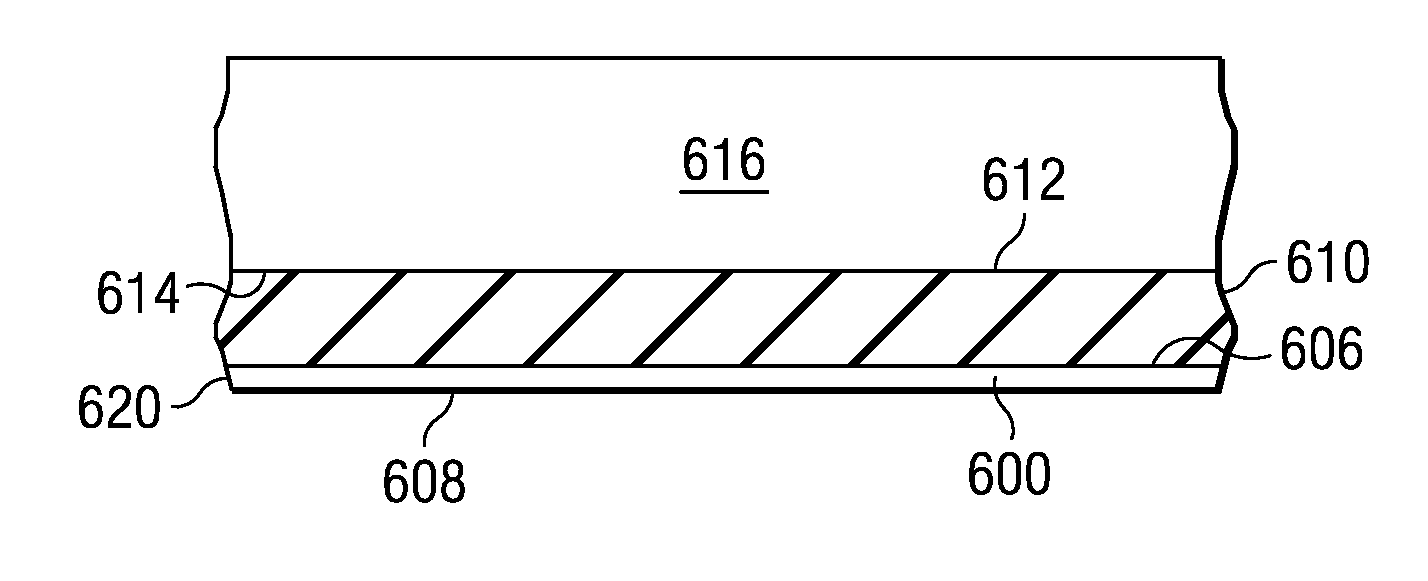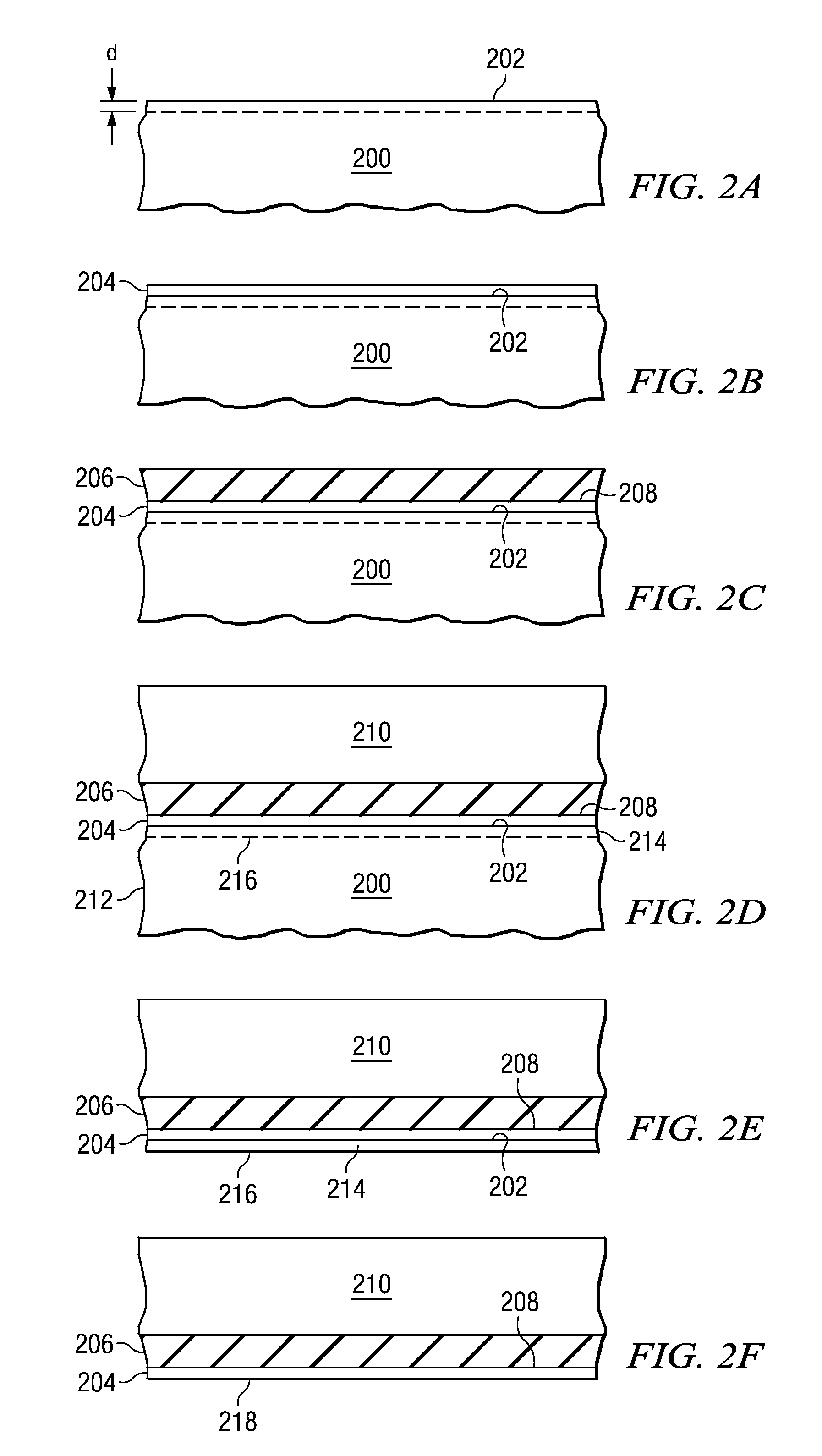Creation of thin group ii-vi monocrystalline layers by ion cutting techniques
a monocrystalline layer and ion cutting technology, applied in the direction of basic electric elements, electrical apparatus, semiconductor devices, etc., can solve the problems of high cost of single-crystal cdte, and mechanically not very robus
- Summary
- Abstract
- Description
- Claims
- Application Information
AI Technical Summary
Benefits of technology
Problems solved by technology
Method used
Image
Examples
Embodiment Construction
[0026]Referring first to FIGS. 1A-1E, successive steps in a first ion cut process according to the invention are illustrated. A first, preselected substrate 100 is provided, which can be made of a relatively inexpensive material such as elemental silicon. Alternatively the first substrate can be another Group IV monocrystalline substrate, such as an alloy of Silicon and Germanium, or a silicon on insulator (SOI) structure in which a silicon portion is uppermost as appears in these FIGUREs. The substrate 100 can also consist or comprise a Group III-V semiconductor or a Group II-VI semiconductor. The substrate 100 should be thick enough to be mechanically robust and successfully resist degrading forces placed upon it during the rest of the process steps described herein, including mechanical, chemical and thermal treatments encountered in semiconductor processing. An upper surface 102 of the substrate 100 may be chosen to be in a plane which will present a crystalline structure which ...
PUM
 Login to View More
Login to View More Abstract
Description
Claims
Application Information
 Login to View More
Login to View More - R&D
- Intellectual Property
- Life Sciences
- Materials
- Tech Scout
- Unparalleled Data Quality
- Higher Quality Content
- 60% Fewer Hallucinations
Browse by: Latest US Patents, China's latest patents, Technical Efficacy Thesaurus, Application Domain, Technology Topic, Popular Technical Reports.
© 2025 PatSnap. All rights reserved.Legal|Privacy policy|Modern Slavery Act Transparency Statement|Sitemap|About US| Contact US: help@patsnap.com



